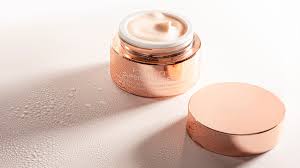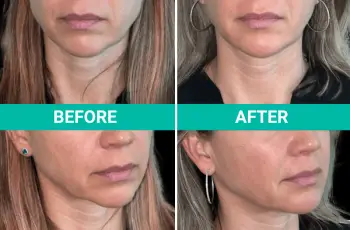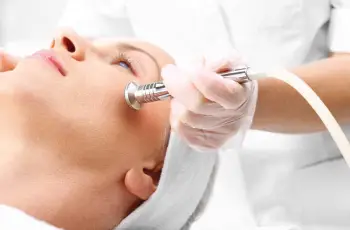
The Ultimate Guide to Face Cream for Skiing: Prevent Windburn and Chapped Skin
Skiing and snowboarding are thrilling winter sports, but cold mountain air can take a serious toll on your skin. Have you ever noticed your face becoming red, dry, or irritated after a day on the slopes?
If so, you might be experiencing windburn or chapped skin. The good news? You can prevent it with the right face cream and skin care routine.
Why Should You Use Face Cream While Skiing?
When you ski or snowboard, your face is exposed to cold, dry, and often windy conditions. These elements strip your skin of moisture and natural oils, causing discomfort.
Windburn and chapped skin are common, but avoidable with proper protection.
Applying a cold weather face cream before hitting the slopes acts like a shield. It prevents windburn, which can cause redness, irritation, and peeling.
Plus, it keeps your skin hydrated, so you avoid painful chapping and flaking that can last for days or even weeks.
What Exactly Is Windburn?
Windburn is the redness and irritation that happens when your skin’s surface is directly rubbed and dried by cold, abrasive winds. It’s not just a mild inconvenience; it can be painful and stubborn.
On mountaintops, the air is colder, drier, and windier than most places. This harsh environment can easily damage unprotected skin. Windburn symptoms include redness, tenderness, and a rough texture. The condition can last several days or up to two weeks, especially if you have naturally dry skin.
If your skin is oily, you might see less severe effects, but it’s still important to protect yourself.
What Causes Chapped Skin?
Chapped skin is a condition where your skin loses moisture and becomes cracked or flaky. It’s very common in dry climates like ski resorts.
While lips are the most frequent spot for chapping, your cheeks, nose, and eyelids can also suffer.
Skiing exposes you to low humidity and cold air, which drains moisture from your skin. Additionally, sweating during physical activity causes water loss, which dry air quickly evaporates.
This combination leads to peeling and flaky skin that can be uncomfortable.
Key Ingredients to Look for in Ski Face Creams
When choosing a face cream for skiing, focus on products designed to repair and protect the skin barrier. Look for ingredients that provide moisture and create a shield against wind and cold.
Jojoba Oil: Mimics natural skin oils, excellent for cold weather.
Shea Butter: Deeply moisturizing with anti-inflammatory properties.
Occlusive Oils: Such as avocado, sesame, and coconut oils, these lock moisture in.
Humectants: Ingredients like glycerin attract moisture but should be balanced with occlusives to prevent drying out.
Avoid creams heavy on humectants alone because they can pull moisture away from your skin in dry environments.
Top Dermatologist-Recommended Face Creams for Skiing
Here are some popular barrier repair moisturizers that dermatologists recommend for protecting your face on the slopes:
Neocutis BIO Cream Firm: Smoothing and tightening formula.
PCA Skin ReBalance: Restores moisture and soothes sensitive skin.
VMV Hypoallergenics Red Better Daily Calming Moisturizer: Great for irritated skin.
La Roche-Posay Toleriane Dermallergo Night Moisturizer: Lightweight but hydrating.
SkinCeuticals Triple Lipid Restore 2:4:2: Excellent for repairing skin barrier.
EltaMD Barrier Renewal Complex: Protective and restorative.
Each offers strong protection against windburn and dryness, so try a few to find your best fit.
Is Vaseline Good for Ski Windburn?
Vaseline, or petroleum jelly, has long been used as a barrier to protect the skin from wind. It forms an occlusive layer that locks in moisture and shields the skin.
However, many people now avoid Vaseline because it is a petrochemical and less “natural.” If you want an alternative, try natural oils like argan oil.
Argan oil contains fatty acids and antioxidants that soothe and protect your skin gently.
How to Cleanse Your Face Without Causing Damage
Cleansing is crucial but can worsen windburn if done incorrectly. Avoid harsh cleansers with low pH or strong acids like salicylic acid or glycolic acid, as they strip natural oils.
Choose creamy, gentle cleansers that help maintain your skin barrier and avoid strong foaming agents or scrubs. Here are some good options:
Nuxe Very Rose Delicate Cleansing Oil
Bioderma Atoderm Shower Oil
La Roche-Posay Lipikar AP+ Gentle Foaming Cleansing Oil
PCA Skin Creamy Cleanser
VMV Hypoallergenics Moisture Rich Creamy Cleansing Milk
These products keep your skin calm and hydrated while cleansing.
Sunscreen Is Still Essential on the Slopes
Cold weather doesn’t mean you can skip sunscreen. UV rays are often more intense at higher altitudes due to thinner atmosphere and snow reflection.
Choose a broad-spectrum sunscreen that protects against UVA and UVB rays. A creamy sunscreen with moisturizing ingredients is best for dry mountain air.
Remember to reapply sunscreen every 2 hours or after sweating or wiping your face. Protecting your skin from sun damage reduces the risk of premature aging and burns.
Mechanical Protection: More Than Just Creams
Beyond skincare products, physical barriers also help prevent windburn and dryness. Wearing a scarf or neck gaiter over your lower face helps block direct wind.
Specialized windproof ski masks and face coverings provide excellent protection. Combining this with goggles shields the skin around your eyes and cheeks.
Don’t forget gloves! Dry, cold hands are prone to eczema flare-ups and cracking. Moisturizing your hands and wearing insulated gloves is a must.
Putting Together a Ski Day Skincare Routine
Cleanse gently in the morning with a creamy, moisturizing cleanser.
Apply a barrier repair moisturizer that suits your skin type.
Use a broad-spectrum sunscreen with SPF 30 or higher.
Apply a protective oil or balm on exposed areas if needed.
Cover your face physically with scarves or masks.
Reapply sunscreen during breaks on the slopes.
Cleanse again at night and use a nourishing night cream.
This routine protects your skin from drying elements and promotes recovery overnight.
Know Your Skin Type: The Baumann Skin Type Quiz
Different skin types need different care. Some are more prone to windburn or dryness. The Baumann Skin Type system helps you understand your skin’s unique needs.
Taking the Baumann Skin Type Quiz can guide you toward the right products and routines. This personalized approach ensures your skin stays healthy and protected in harsh conditions.
Final Thoughts: Enjoy the Slopes Without Sacrificing Your Skin
Skiing is exhilarating but harsh on your skin. Windburn, chapping, and sunburn are common, but preventable. Using the right creamy moisturizers, gentle cleansers, and sunscreens makes all the difference.
Focus on barrier repair and occlusive ingredients to lock in moisture. Supplement with natural oils like jojoba or argan oil. Don’t forget physical protection like scarves and masks.
With a thoughtful skincare routine, your face will stay smooth, hydrated, and radiant — no red patches or peeling after a day on the mountain. Enjoy your time skiing, knowing your skin is well cared for.


